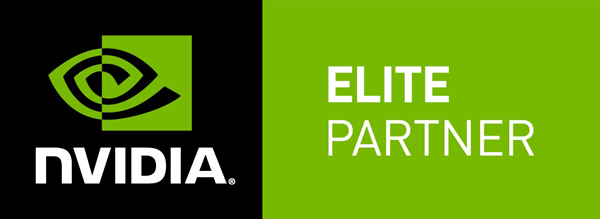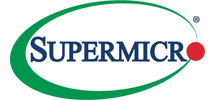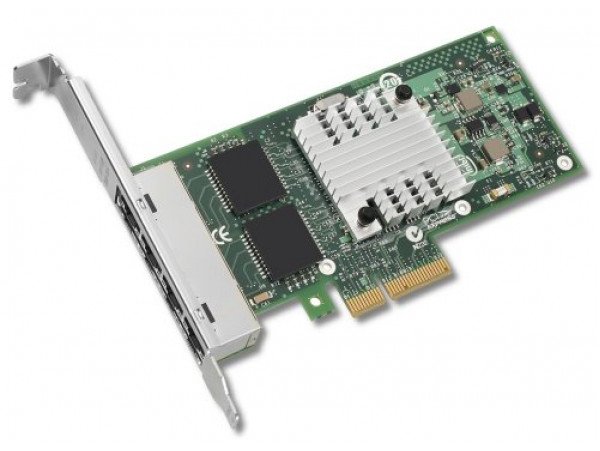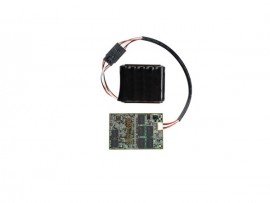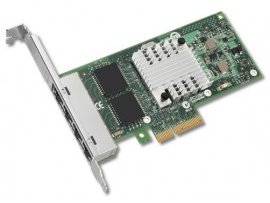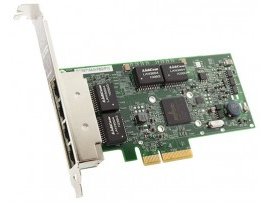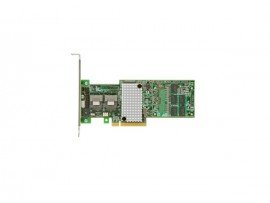-
Server
 Hãng sản xuấtTheo cấu hình
Hãng sản xuấtTheo cấu hình -
Workstation
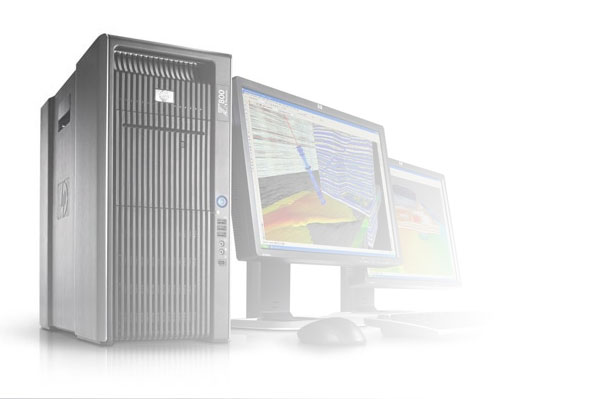 Hãng sản xuấtWorkstationDeep Learning
Hãng sản xuấtWorkstationDeep Learning - Storage
-
Parts
Hãng sản xuấtTheo dòng máy chủ
-
Networking
 Hãng sản xuất
Hãng sản xuất - License
-
Giải pháp

- Blog
-
Thông tin
Về chúng tôi
- Liên hệ
Danh mục
Intel I350-T4 4xGbE BaseT Adapter - 00AG520
- Nhà sản xuất: Lenovo IBM
- Mã sản phẩm TM4479
- Tình trạng: Liên hệ đặt hàng
- 5.850.000 VNĐ
Giá trên chưa bao gồm thuế VAT 10%
NVKD sẽ liên hệ lại ngay
Thông tin sản phẩm Intel I350-T4 4xGbE BaseT Adapter - 00AG520
Intel I350-T4 4xGbE BaseT Adapter - 00AG520
Partnumber: 00AG520
Features and specifications
Adapter features:
Connectors:
I350-T4 ML2, I350-T4 adapters: Four 10/100/1000 copper ports with RJ45 connectors
I350-T2 adapter: Two 10/100/1000 copper ports with RJ45 connectors
I350-F1 adapter: One fiber optic LC connector supporting MMF 62.5/50 µm cables, conforming to IEEE 802.3Z 1000BASE-SX. (Note: The LC connector is fixed and cannot be removed).
Based on Intel I350 ASIC
Line rate with IEEE 802.3 auto negotiation for 1000/100/10 Base-T Ethernet (T4 ML2, T2, and T4 adapters only)
Host interface: PCIe 2.0 x4 host interface
Form factor:
I350-T4 ML2 adapter: Mezzanine LOM Generation 2 (ML2) form factor
Other I350 adapters: Standard PCI-e low profile card form factor
Power dissipation:
I350-T4 ML2 adapter: 12.5 W typical
I350-F1 adapter: 5.1 W typical
I350-T2 adapter: 4.6 W typical
I350-T4 adapter: 5.9 W typical
Performance features:
TCP/UDP, IPv4 checksum offloads, and extended Tx descriptors
IPv6 support for IP/TCP and IP/UDP receive checksum offloads
Tx TCP segmentation offload (IPv4 and IPv6)
Transmit segmentation offload
Interrupt throttling control
Message Signal Interrupt (MSI) support
Message Signal Interrupt Extension (MSI-X) support
Intelligent interrupt generation
RSS for Windows
Scalable I/O for Linux
Low-latency interrupts
Header/Packet Data Split in Receive
PCIe v2.1 TLP processing hint requester
Descriptor ring management hardware for transmit and receive
Ethernet and power features:
IEEE 802.3, 802.3u, and 802.3ab (Base-T adapters only)
Jumbo frame support (9500 bytes)
IEEE 1588 and 802.1AS
MDI/MDIX auto crossover detection
IEEE 802.3x compliant flow control
IEEE 802.3z (I350-F1 adapter only)
Flow control (IEEE 802.3)
VLAN support (IEEE 802.1q)
Priority of service (IEEE 802.1p)
PXE Preboot eXecution
iSCSI support for native OS and VMM iSCSI software initiators
Wake on LAN support (Base-T adapters only)
IEEE 802.3az Energy Efficient Ethernet
DMA coalescing
Virtualization features:
SRIOV support
Intel Virtual Technology (VT) with I/OAT and VMDq
Eight TX and Rx Queue pairs per port
Flexible Port Partitioning - 8 virtual functions (VFs) per port
RX/TX Round-Robin Scheduling
Traffic isolation
Traffic steering
VM to VM packet forwarding
MAC and VLAN anti-spoofing
Malicious driver detection
Storm control
Per-pool statistics, off loads, and jumbo support
IEEE 802.1q VLAN support with VLAN tag insertion for up to 4096 VLANs
Mirroring rules
VEPA (VM switching)
Xem thêm
Sản phẩm liên quan(4)
TƯ VẤN - MUA HÀNG - BẢO HÀNH
 Văn phòng chính Hồ Chí Minh
Văn phòng chính Hồ Chí Minh
+84 2854 333 338 - Fax: +84 28 54 319 903
 Chi nhánh NTC Đà Nẵng
Chi nhánh NTC Đà Nẵng
+84 236 3572 189 - Fax: +84 236 3572 223
 Chi nhánh NTC Hà Nội
Chi nhánh NTC Hà Nội
+84 2437 737 715 - Fax: +84 2437 737 716
Copyright © 2017 thegioimaychu.vn. All Rights Reserved.


